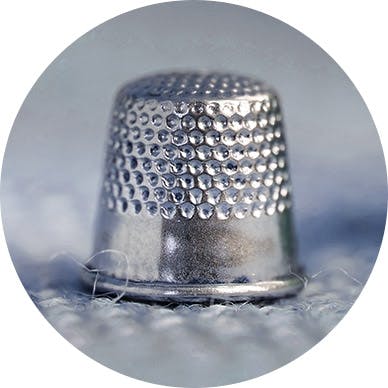Valentine’s Day is just a few weeks away and retail establishments everywhere are bursting at the seams to bring us the best in everything luxurious, decadent, delicious, and romantic. The fashion industry is no exception. One of my favorite trends I have been noticing in the gorgeous dress wear appearing in stores for the big night out is elegant, plush velvet. A tale as old as time, velvet was a favored fabric among the fashion elite (re: Royalty) dating back as far as the ruling class of Ancient Egypt in 2000BC. It has made a fashion come-back at least once a decade since then. It is no surprise, then, that the manufacturing and composition of velvet has adapted with the times as well. As you embark on your Valentine’s Day creations, we want to briefly touch upon the differences between sewing with velvet and velveteen, and tips for using them both effectively.
Velvet’s soft plushness comes from is unique weaving process. On the loom, two layers of fabric are woven face to face, with an extra set of threads woven between the two layers. A blade then cuts through this extra set, separating to the two pieces of fabric and creating the soft, plush, velvety effect known as the “pile.” This pile can appear differently based on how it is cut, thus creating the different varieties of velvet. Sometimes, an additional step occurs in which the cut pile is pressed or stamped with a chemical solution, creating a “crushed” look or a pattern in the velvet.
Velveteen is manufactured in basically the same way with an extra set of threads that is cut to create the pile. But there are a few key differences. First of all, velvet is made from silk, rayon, acetate, polyester, or a blend of these. Velveteen, on the other hand, is made from cotton. This makes the resulting fabric less dense and slightly stiffer.
So what does this mean for you? Well, it depends on your project. Velvet, because of the fiber it is made of, drapes more easily than velveteen. If you’re constructing a skirt or flow-y top, velvet might be a better choice. It also embodies the trademark ultra-soft texture people often associate with the fabric. Velveteen, being made from a stiffer cotton fiber, is a great choice for sleeves, collars, coats and jackets, or fitted bodices. It is also much less expensive and easier to clean at home than velvet, which must be dry-cleaned to maintain its pile effect.
Your sewing methods should also be taken into consideration for both velvet and velveteen. The nature of the pile makes it so that stitches show quite easily, Use very sharp needles and very fine thread (100% cotton or silk). Go for styles that don’t require a lot of darts, and try to refine your pattern before starting the garment (removed stiches will make the fabric look damaged). Try to avoid using pins for the same reason –a temporary spray adhesive is a better choice for long lines of stitching, such as hems). Finally, the pile has a different appearance depending which way it is cut and in which direction it is brushed. This aesthetic needs to be considered when piecing together and sewing the garment.
Don’t forget to finish off your dreamy velvet garment with a high quality, custom woven label! From top to bottom, you or your customer will be dressed to impress this Valentine’s Day.













